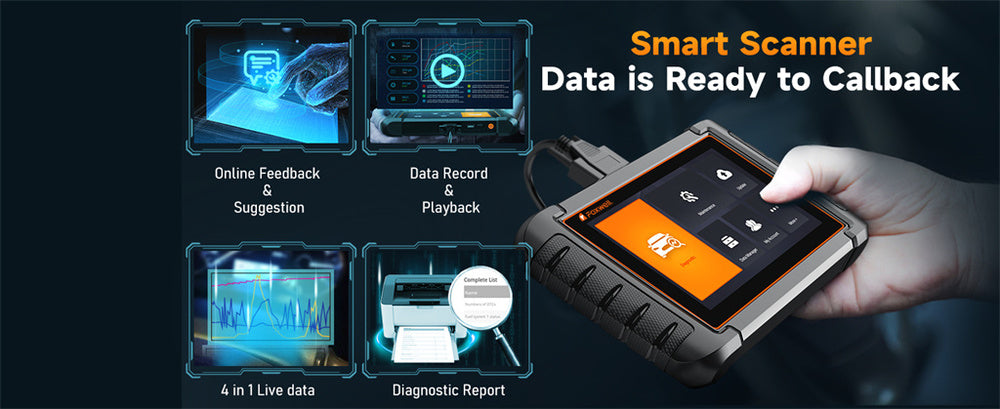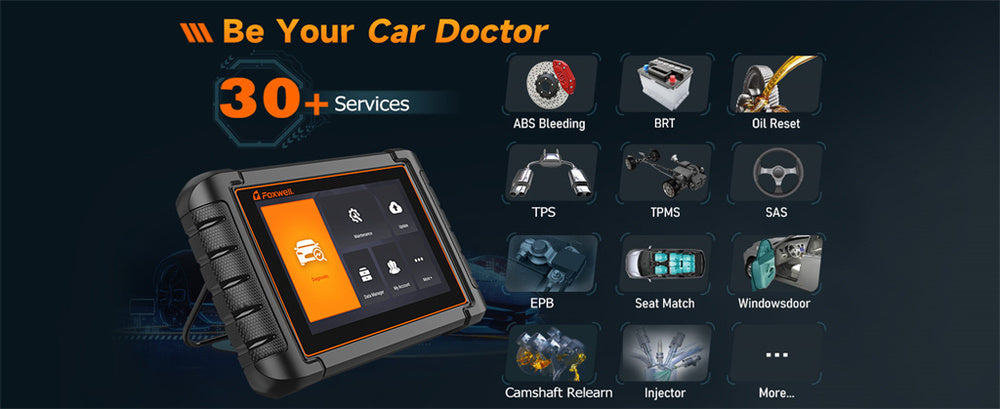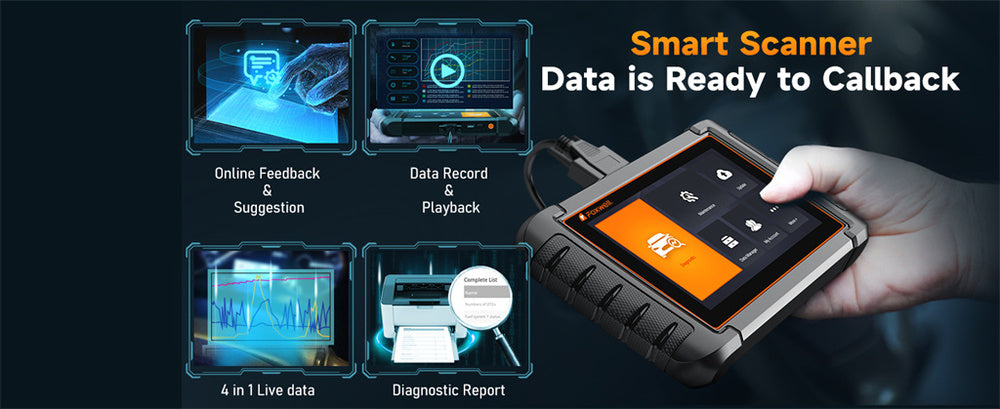While driving along a winding road and enjoying the scenic view, suddenly, a deer jumps out in front of your car and instead of coming to a controlled stop, your vehicle skids uncontrollably despite you applying brakes immediately.
In such an instance, an Anti-Lock Braking System (ABS) could save your life. However, its maintenance requires more than simply topping off with brake fluid: air can become trapped within its lines over time, which reduces efficiency significantly; that is where a scan tool that bleeds ABS brakes becomes invaluable.
Have you ever wondered why your mechanic insists on using a special tool instead of doing it manually? Have you attempted to bleed your ABS brakes only to discover it is more complex than expected? Feel free: many vehicle owners need help maintaining ABS systems. With the proper scan tool in your arsenal, this task can be accomplished quickly and ensure your brakes always remain in top shape!
We'll explain ABS bleeding, why scan tools are essential, and how to use one effectively. Let's dive in and make sure your vehicle's brakes are prepared for anything the road throws your way!
What Is ABS and Why Does it Matter?

Anti-lock braking Systems (ABSs) have become an indispensable safety feature on modern vehicles, providing enhanced braking performance while helping avoid accidents. Here's more of an in-depth explanation of its components, functions, and significance:
Components of ABS
Wheel Speed sensors monitor each wheel's speed and report that information to the ABS Control Module for processing. The ABS Control Module acts as the brain of the ABS system by processing data received from wheel speed sensors, controlling brake pressure accordingly, and processing wheel speed sensor data.
Hydraulic Valves: Located within the brake lines, hydraulic valves can increase, decrease, or maintain brake pressure as directed by the ABS control module.
Pump: When hydraulic valves reduce brake pressure, the pump can restore it if the hydraulics drop below set levels.
Function of ABS
ABS' primary function is to prevent the wheels from locking up during hard braking. Here's how it works:
Monitoring: Wheel speed sensors continuously track each wheel's speed, while detection occurs if one starts decelerating too quickly, suggesting it might lock up. The ABS control module recognizes this.
Adjustment: Once an issue arises, the ABS control module signals hydraulic valves to reduce brake pressure on affected wheels.
Rebalancing: Once wheel speed has stabilized, rebalancing begins; as soon as this happens, the pump restores pressure for effective braking without lock-up.
Importance of ABS
ABS allows drivers to maintain steering control during emergency braking, helping avoid skids and collisions. It may also reduce stopping distance on certain surfaces (wet roads).
ABS' primary function is preventing wheel lock-up. ABS enhances vehicle control by keeping wheels from locking up and contributing to vehicle stability and direction control. Meanwhile, emergency braking situations become safer through optimized brake performance provided by ABS.
ABS brakes are essential to vehicle safety, and proper care must be taken in their maintenance to ensure they work as intended. Bleeding them regularly ensures optimal function when most needed.
The Role of Scan Tools in Bleeding ABS Brakes
Bleeding brakes are crucial to removing air bubbles from brake lines to ensure optimal brake performance. Unfortunately, with modern ABS systems becoming more complex than ever, traditional bleeding methods cannot keep pace, which is where scan tools come into play.
Tradition Methods Fail
Traditional brake bleeding techniques involve manually opening and closing brake bleeder valves while another person pumps the pedal; although this approach may work effectively for non-ABS systems, it has several drawbacks when applied to ABS systems:
Complexity of ABS Components: An ABS comprises several complex components, such as its module, hydraulic pump, and valves, beyond what can be found in traditional brake systems.
Air Can Get Caught Up in ABS Components: Air may become trapped within an ABS module or pump, and traditional methods cannot effectively release it. Precise Control Is Needed: ABS systems need precise control to open and close valves at appropriate times to remove all air at the appropriate times.
Scan Tools Can Solve These Issues
Scan tools designed specifically to work with ABS systems can activate the ABS pump and valves to make bleeding more efficient and straightforward. Here is an in-depth look at their role.
Scan tools can activate ABS components through commands to the ABS module, activating pump and valve mechanisms to purge any air trapped in ABS components and purge any trapped air from them. Many scan tools include automated sequences for bleeding brakes that guide users step-by-step.
Diagnostic Capabilities: These tools offer real-time data and fault codes to diagnose ABS issues quickly and resolve them effectively.
Efficiency and Precision: Utilizing a scan tool for ABS bleeding is more efficient and precise than manual methods, providing a thorough air removal from the system.
One such example would be using the Foxwell NT809 scan tool for this process. It involves:
Connecting a Scan Tool: Attach the scan tool to the vehicle's OBD-II port. Then, access the ABS Module via its interface to access its contents and select the ABS Bleeding function.
Follow Instructions: Follow the on-screen instructions to activate the ABS pump and valves.
Bleed Brakes: Using your scan tool to bleed the brakes will ensure air is removed effectively from ABS components.
With a scan tool, you can ensure your ABS is bled accurately, protecting its safety and performance while improving the performance of your braking system.
Advantages of Utilizing a Scan Tool for ABS Bleeding has many advantages:
- Precision: Ensuring all air is removed from ABS components.
- Efficiency: Reducing the time required compared with manual methods.
- Effectiveness: Amplifying the braking system's overall performance.
- Safety: Maintaining reliability during emergency braking situations.
Know When to Use a Scan Tool for ABS Bleeding
Understanding when and why a scan tool for ABS bleeding is vital for maintaining your vehicle's braking system. Here are a few scenarios where using one could prove indispensable:
- After Brake System Repairs: Air can enter the system when brake lines or ABS components are repaired or replaced.
- Brake Fluid Replacement: During a complete brake fluid flush using a scan tool, an airlock removal test ensures no air remains within the ABS module.
- Soft or Spongy Brakes: If your brakes feel soft or spongy, it could be because air is trapped within the ABS system.
- Regular Maintenance: Bleeding the ABS can be part of regular maintenance to ensure optimal brake performance.
- ABS Warning Light: An illuminated ABS warning light could signal an issue that needs to be resolved by bleeding the system.
Step-by-Step Guide to Bleeding ABS Brakes with a Scan Tool
A quality scan tool like the Foxwell NT809 makes bleeding ABS brakes a straightforward and efficient process, and here is a step-by-step guide that will assist with this task:
Prep Work: Before commencing any testing on your vehicle, ensure it is on a flat surface and the brake fluid reservoir is full. All necessary tools, such as the Foxwell NT809 scan tool, must be ready.
Attach the Scan Tool:
- Attach your scan tool to the OBD-II port on your vehicle.
- Turn on its ignition without starting your engine.
- Connect your scan tool.
Access ABS Module: Use your scan tool to access the ABS module and browse through its menu to locate its bleeding function - Foxwell's NT809 provides clear and straightforward guidance during this process.
Follow Instructions: The scan tool's on-screen instructions will guide you through activating the ABS pump and valves.
Bleed Brakes: Once activated, use your scan tool to activate the ABS pump and valves. Follow the sequence for bleeding each brake line as directed, typically starting with those farthest from the master cylinder and working your way closer.
Check Fluid Levels: Monitor brake fluid levels as part of any process. Add extra brake fluid to avoid air entering the system and causing potential issues.
After bleeding the brakes, take your vehicle for a test drive to ensure all brakes function appropriately. Check for any warning lights and ensure the pedal feels firm.
Using a reliable scan tool such as the Foxwell NT809 can significantly ease the ABS bleeding process, guaranteeing precision and efficiency in terms of both time and effort spent on bleeding.
Expert Perspective on Scan Tools for ABS Bleeding
Automotive professionals emphasize the significance of selecting an appropriate scan tool when performing ABS bleeding. According to John Smith, an experienced automotive technician with over two decades in his career, using tools tailored explicitly for ABS systems is vital in making the bleeding process more efficient while simultaneously cycling all ABS components correctly to remove air and ensure more reliable and safer brake performance.
Experts stress the importance of regular maintenance. Even if there are no obvious issues with your brakes, periodic bleeding using a scan tool is still recommended as part of ongoing preventative maintenance to mitigate future potential problems and extend their lifespan, according to Mary Johnson, an accredited master mechanic. "Investing in quality scan tools is worth the nominal investment for safety and longevity of braking system," Johnson concludes.

Conclusion
A scan tool capable of bleeding ABS brakes should be an investment for every vehicle owner or professional mechanic, providing peace of mind on the road. By selecting and following proper procedures, this scan tool can ensure maximum braking performance while prolonging its life and protecting its value over time.
FAQs
Why is bleeding ABS brakes important?
Removing air bubbles from ABS brakes prevents spongy brake pedals and ensures optimal braking efficiency.
How do scan tools assist in bleeding ABS brakes?
They activate the ABS pump and valves, ensuring all air is purged from the brake system more precisely than manual methods.
Can any scan tool bleed ABS brakes?
No, you need a scan tool specifically designed for ABS systems to perform this task effectively.




Leave a comment
This site is protected by hCaptcha and the hCaptcha Privacy Policy and Terms of Service apply.